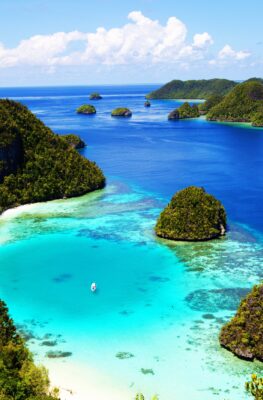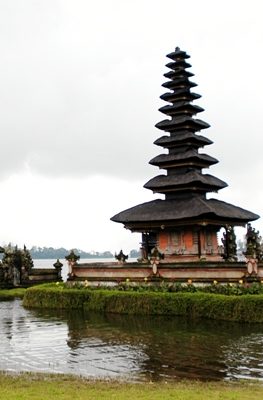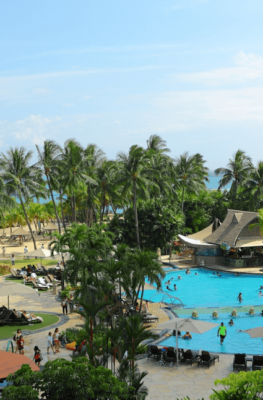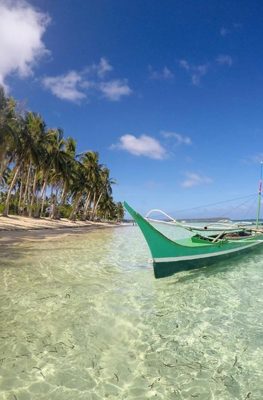Published on June 10, 2010
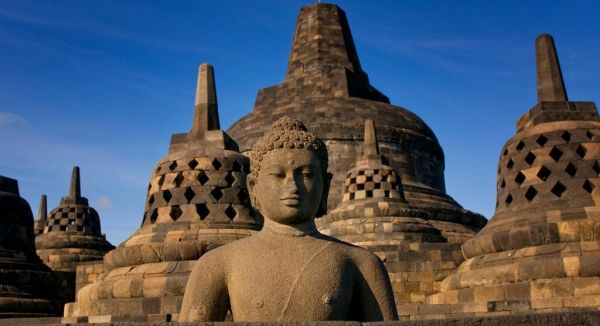
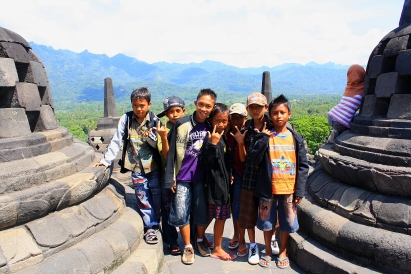
Sitting on a stone block on the top terrace of Borobudur temple, watching members of an Indonesian school group photograph each other beside statues of the Buddha, it was hard to believe that for centuries the site had been abandoned and largely forgotten beneath volcanic ash.
The huge stone structure – its square base measures 123m along each side – was built around a hill on the island of Java in the 8th and 9th centuries. The complex has no interior, rather it consists of a series of concentric terraces running up the hill. It is not known exactly why, or even when, the temple ceased to be used. It could have been a combination of a shift of political influence away from central Java and a series of volcanic eruptions in the area during the 10th century. It’s also possible that the introduction and popularity of Islam in the 15th century within the region was what ended worship at the site.
I was visiting Borobudur travelling from Surakarta (also known as Solo) to Yogyakarta. Yogyakarta is a particularly popular destination among tourists for its royal palaces and handicrafts (although I found the relaxed atmosphere of Solo more to my taste). Tour companies in both cities arrange visits to the temple, often including other sights such as the impressive Hindu temples at nearby Prambanan. These tours typically include transport only, so I hired an official guide from the Borobudur ticket office.
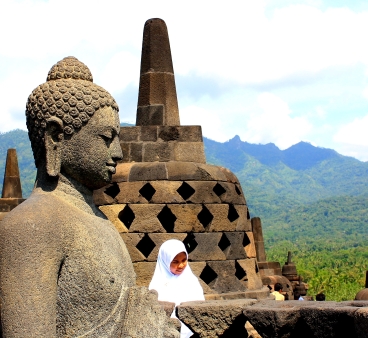
It turned out to be a good decision, and I would highly recommend it as a way of bringing the site to life. The guide started by drawing my attention to the plan of the temple displayed on a board near the entrance. Borobudur consists of nine terraces getting smaller as they get higher; the bottom six are square and the top three circular. At the very top is a large bell-shaped stupa, which would have contained a statue of the Buddha, although this is now missing, as well as 72 smaller stupas. It has been suggested that the temple may originally have stood ‘floating’ in a lake like a lotus flower.
As we entered the structure through the main entrance on the Eastern side, my guide explained that pilgrims would have walked a clockwise route around the temple and ascended a level after every complete circuit (a total distance of about 5km). He didn’t propose to take me on this full route, but instead to shorten it using the steps in the centre of each of the four sides.
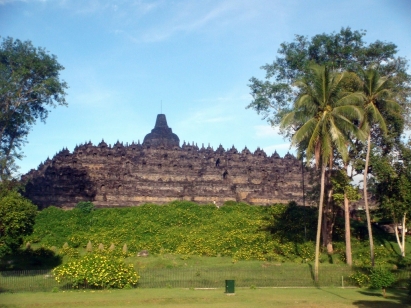
He explained that Borobudur’s structure is rife with symbolism, depicting a Buddhist view of the cosmos starting with K?madh?tu (the world of desire) at the base of the structure and working up through Rupadhatu (the world of forms, the square levels) to Arupadhatu (the world of formlessness, the circular levels). The whole structure resembles a Buddhist mandala. Along the way my guide explained a few of the 2,672 relief panels included on the square levels, recounting stories from the life of Buddha and other figures from Buddhist mythology.
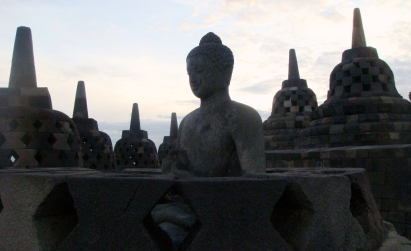
The structure also has 432 niches for cross-legged Buddha statues, although some of them are damaged or missing. Moving up to the circular levels the temple opens out – rather than being enclosed between walls covered in reliefs, these upper terraces have views of the surrounding area. Each of the 72 small stupas was designed to contain a statue of Buddha visible through small perforations, and my guide encouraged me to reach through to touch one particular ‘lucky Buddha’. Folk legend claims it will grant a wish to any woman who can touch its foot or man who can touch its hand.
This was where my tour ended, but I decided to linger a bit and enjoy the view from the top exploring the top a little more. Although Borobudur is a hugely popular site, I had avoided the weekend and was able to find some peace. I watched an expert from an Indonesian museum taking a cast of one of the reliefs, and eventually made my way down slowly as the sun began to set. Perhaps, next time I’ll stay at the hotel within the grounds and take the special dawn tour – the only way to see this once-forgotten temple as the sun rises over Indonesia.
John Oates is a freelance writer/photographer and has travelled through much ofAsia. He recently spent a year based inthe Philippines while visiting several other ASEAN countries.Contact John at http://www.johnoates.co.uk.



